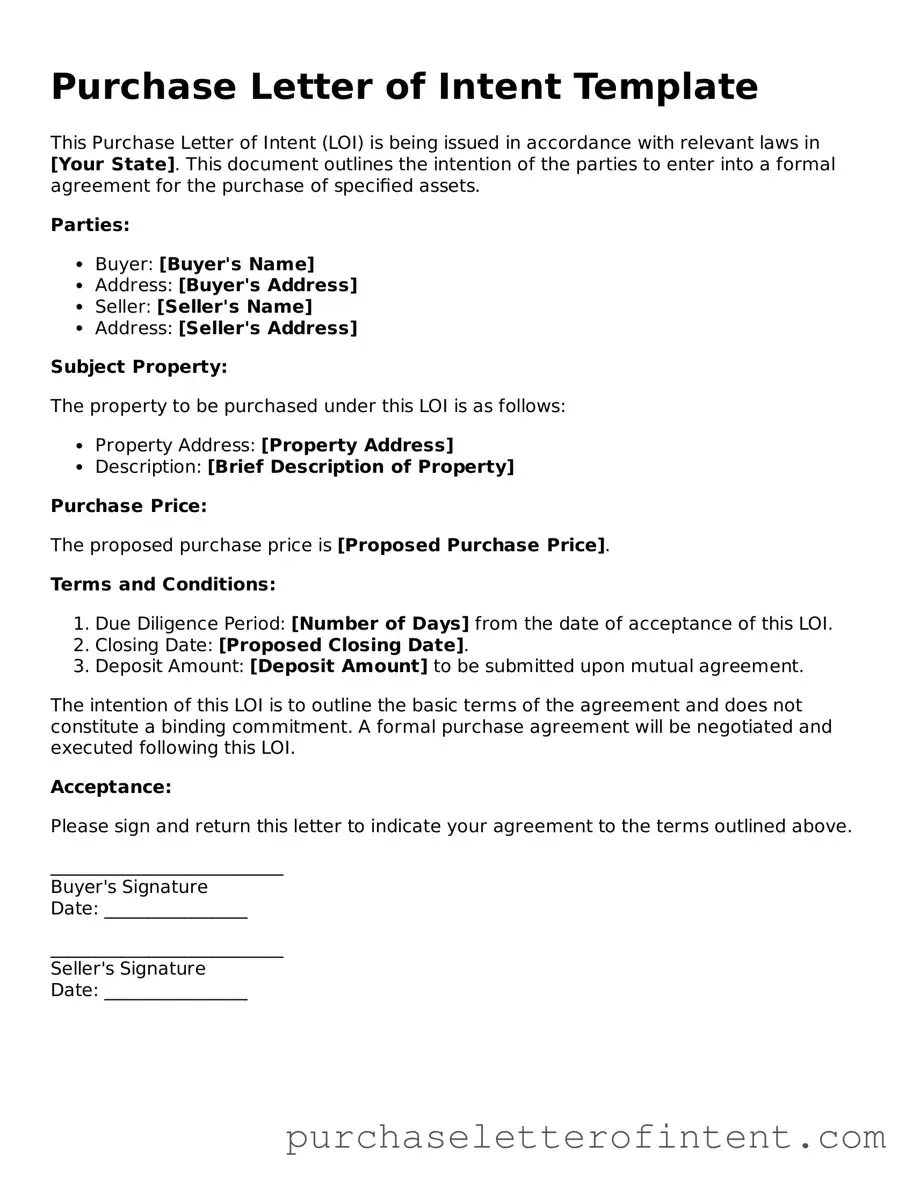Filling out a Purchase Letter of Intent (LOI) can be a straightforward process, but many individuals encounter common pitfalls that can complicate their intentions. One frequent mistake is providing incomplete information. When essential details, such as the buyer's contact information or specific terms of the offer, are missing, it can lead to misunderstandings and delays in negotiations.
Another common error is failing to clearly define the terms of the purchase. Vague language can create confusion. Buyers should be explicit about the purchase price, payment terms, and any contingencies. Ambiguity can lead to disputes later on, so clarity is essential.
Additionally, some individuals neglect to include relevant deadlines. Timelines for acceptance, due diligence, and closing dates are critical components of the LOI. Without these deadlines, the process may stall, and parties may lose interest or move on to other opportunities.
Many people also forget to consider the legal implications of their LOI. While it may seem informal, an LOI can still have binding elements. Buyers should be aware of what they are agreeing to and ensure that they are comfortable with the commitments outlined in the document.
Another mistake is underestimating the importance of a professional tone. The language used in the LOI should reflect seriousness and professionalism. A casual or overly informal tone can undermine the buyer’s position and may lead the seller to question the buyer's intentions.
Moreover, some buyers fail to do their homework on the seller. Understanding the seller's motivations and background can provide valuable insights during negotiations. A lack of research can result in missed opportunities to tailor the offer to meet the seller's needs.
In addition, overlooking the need for signatures can render the LOI ineffective. A signed document is crucial for demonstrating commitment and intent. Buyers should ensure that all necessary parties sign the LOI before submission.
Finally, many individuals do not seek professional advice when drafting their LOI. Consulting with a legal or real estate professional can help clarify the terms and ensure that the document meets all necessary requirements. This step can prevent costly mistakes and facilitate a smoother negotiation process.
